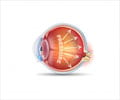Glaucoma treatment: Your brain pressure can control your eye pressure. For the first time, a new study highlights that eye and brain pressure are physiologically connected. This groundbreaking study could open up new avenues for glaucoma prevention.

‘Your brain pressure can control your eye pressure. For the first time, a new study highlights that eye and brain pressure are physiologically connected. This groundbreaking study could open up new avenues for glaucoma prevention.’
Read More..




Glaucoma is associated with increased pressure in the eye due to a reduce ability of the eye to maintain proper fluid drainage. The heightened pressure applies mechanical strain to the optic nerve as the nerve exits the eye, resulting in vision loss and potential blindness.Read More..
It has long been hypothesized that brain pressure might also play a role in glaucoma because the amount of strain on the optic nerve depends not just on eye pressure, but the difference in pressure between the eye and brain.
The groundbreaking study published in the Journal of Physiology shows, for the first time, that eye and brain pressure are physiologically connected. The neuroscientists came to this conclusion by altering brain pressure in animal models and noting changes in the fluid drainage properties of the eye that could be blocked by chemicals that eliminate feedback signals from the brain. Interestingly, the eye's ability to clear fluid changed in a manner that restored a healthy pressure difference across the optic nerve.
"The drainage control system may service to protect the optic nerve from swings in eye or brain pressure," said Chris Passaglia, PhD, professor in the USF Department of Medical Engineering. "Its discovery offers a new target for glaucoma treatment, wherein the modulatory mechanisms of the system might be exploited to help lower eye pressure and impede disease progression in glaucoma patients."
Glaucoma is the leading cause of blindness in people over the age of 60. Since symptoms often don't arise until the condition has advanced, ophthalmologists check the eye pressures of patients during routine exams by administering an "air puff test." However, Passaglia says there are more complex aspects of the disease that make diagnosis a challenge. Some patients exhibit symptoms of glaucoma yet have normal eye pressure. While others with high eye pressure, don't always show signs of the condition.
Advertisement
Source-Eurekalert















